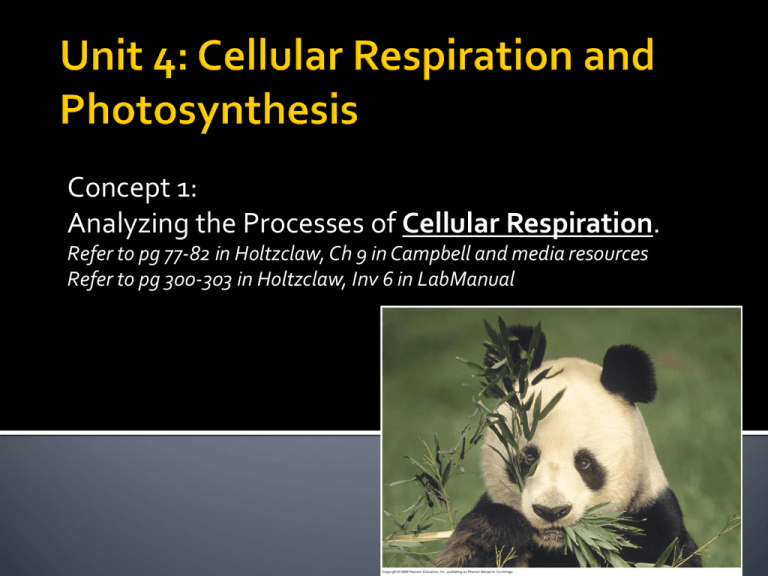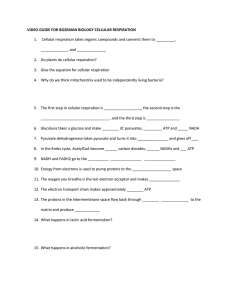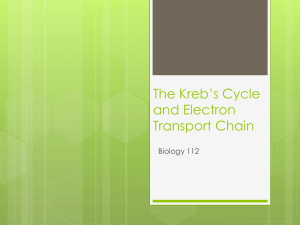Concept 1: Cellular Respiration
advertisement

Concept 1: Analyzing the Processes of Cellular Respiration. Refer to pg 77-82 in Holtzclaw, Ch 9 in Campbell and media resources Refer to pg 300-303 in Holtzclaw, Inv 6 in LabManual You must know… The equation for cellular respiration. The components of a repsirometer and how they interact The gas laws that affect volume changes within the repsirometer and cellular respiration The effect of temperature or increased metabolic activity on respiration How to calculate the rate of respiration Read lab manual and p. 300-303 in Holtz Do #1-6 p. S73 in manual and #1-4 p. 303 in Holtz The summary equation of cellular respiration. The difference between fermentation and cellular respiration. The role of glycolysis in oxidizing glucose to two molecules of pyruvate The process that brings pyruvate from the cytosol into the mitochondria and introduces it into the citric acid cycle How the process of chemiosmosis utilizes the electrons from NADH and FADH2 to produce ATP C6H12O6 + 6 O2 6 CO2 + 6 H2O + Energy (ATP + heat) Where can you find all of these reactants/products? Glycolysis Citric Acid Cycle Oxidative Phosphorylation Glucose is the reactant 6 CO2 are produced for each glucose (oxidation) O2 is reduced to H2O (as NADH is oxidized back to NAD+) C6H12O6 + 6 O2 6 CO2 + 6 H2O + Energy (ATP + heat) Where can you find all of these reactants/products? Glycolysis Citric Acid Cycle Oxidative Phosphorylation Glucose is the reactant 6 CO2 are produced for each glucose (oxidation) O2 is reduced to H2O (as NADH is oxidized back to NAD+) Produces NADH, FADH2 as well as some ATP Synthesizes 90% of the ATP by oxidizing NADH What is the overall route of electrons during cellular respiration? What is the overall route of electrons during cellular respiration? Glucose NADH/ FADH2 Electron transport chain H2O (Oxygen is the acceptor!) Glucose NADH/ FADH2 Electron transport chain Proton Motive Force ATP Oxygen PROJECTS!!! Individual or in partners See criteria and videos Tues/Thus – Time to work Mon – DUE





